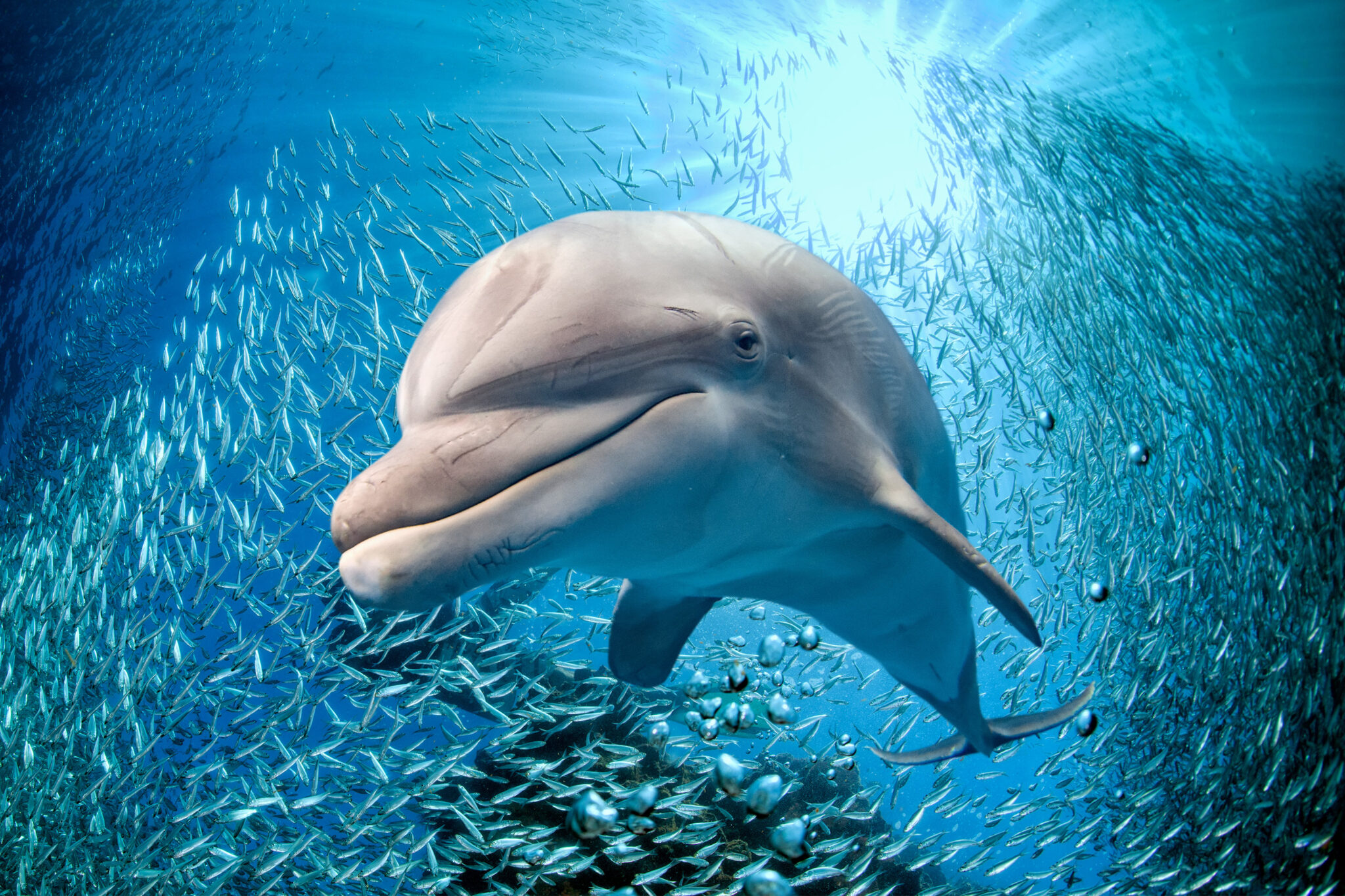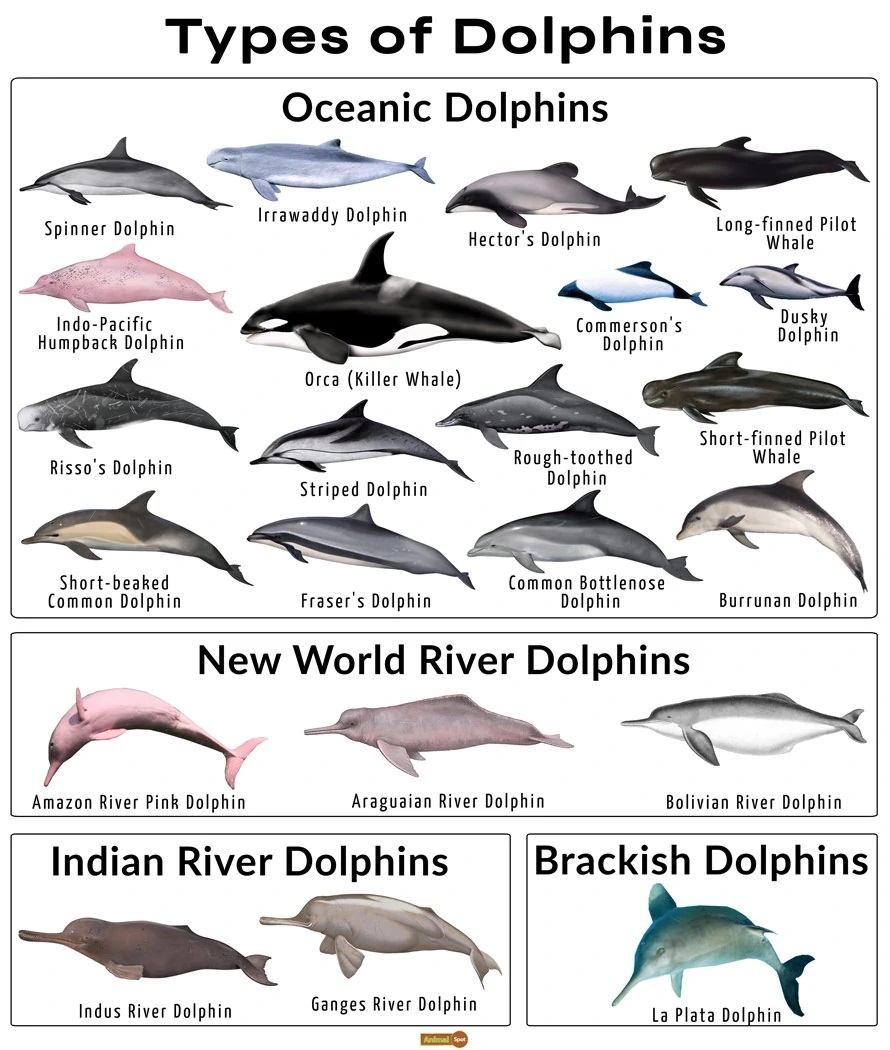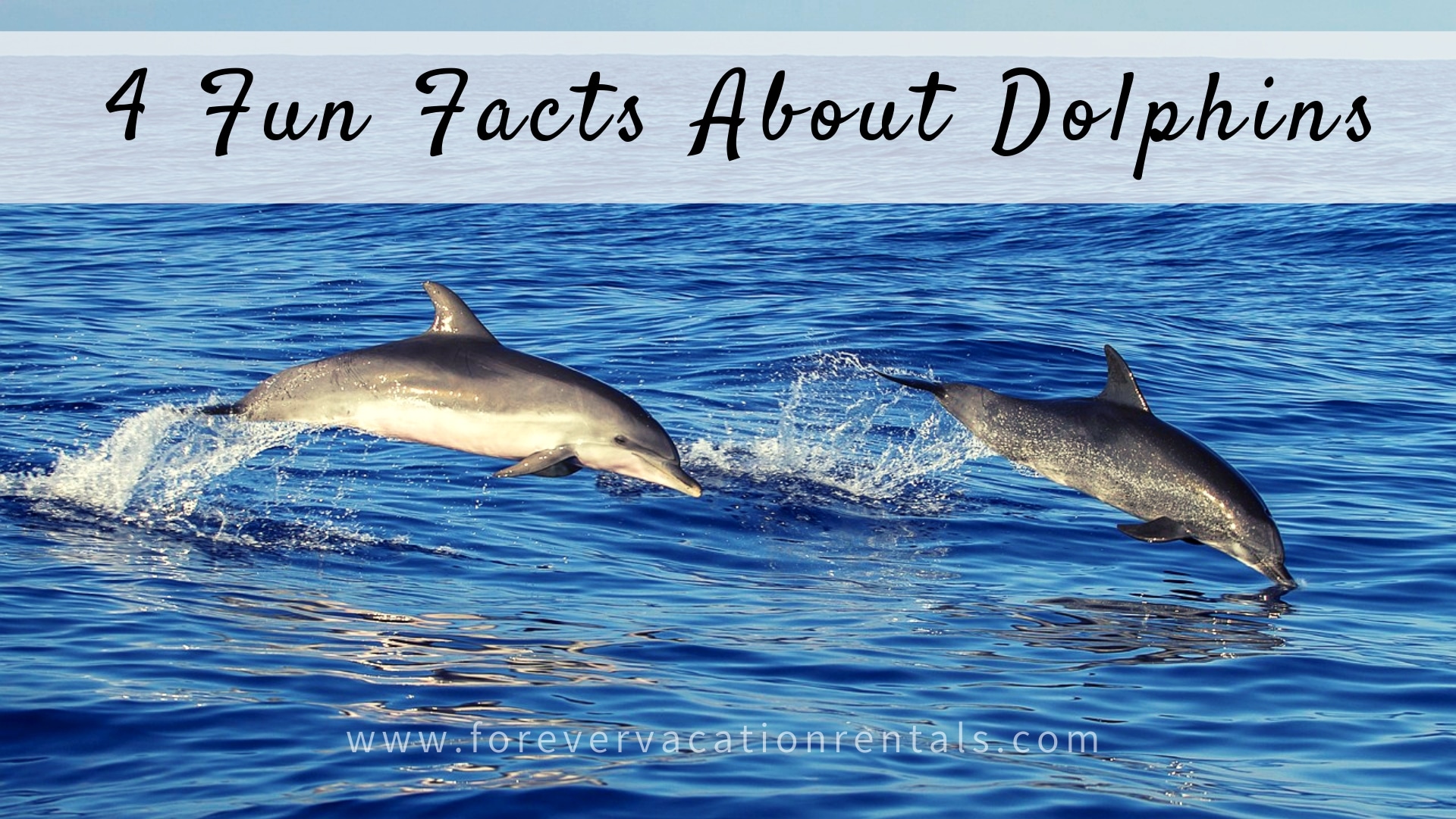Enjoyable and Educational Dolphin Facts for Kids and Grownups Alike
Enjoyable and Educational Dolphin Facts for Kids and Grownups Alike
Blog Article
Unveiling Dolphin Facts: Nature's Intelligent Marine Mammals
Dolphins, commonly considered as among the sea's most intelligent inhabitants, show a fascinating selection of habits and social structures that warrant closer exam. With over 40 distinctive species, these marine creatures not just show amazing interaction skills and complicated social interactions however also possess advanced cognitive abilities that test our understanding of non-human intelligence. Dolphin Facts. As we check out the nuances of their lives, one should take into consideration just how these qualities affect their communications with people and the pushing importance of conservation. What implications do these insights hold for our relationship with these extraordinary animals?
Dolphin Types Variety
Dolphins are a varied group of marine mammals belonging to the family Delphinidae, which encompasses over 40 unique varieties. This household includes widely known types such as the common bottlenose dolphin (Tursiops truncatus), the whale or killer whale (Orcinus orca), and the risso's dolphin (Grampus griseus) Each types displays distinct physical characteristics, behaviors, and adaptations that enable them to thrive in different aquatic atmospheres.
Dolphin varieties differ significantly in size, ranging from the small Maui's dolphin (Cephalorhynchus hectori) at about 1.2 meters to the orca, which can get to lengths of as much as 9 meters. Their pigmentation additionally differs, with some types showing striking patterns that aid with camouflage or social signaling. Additionally, dolphins populate varied habitats, from coastal regions and estuaries to the open ocean, showcasing their flexibility.
Research study right into dolphin varieties diversity highlights the ecological relevance of these mammals, as they play crucial functions in marine ecosystems. Understanding the different types is crucial for conservation initiatives, as several face dangers from habitat air pollution, environment, and loss change, demanding targeted protection measures to guarantee their survival.
Social Frameworks and Behavior
The intricacy of dolphin species is mirrored in their detailed social frameworks and behaviors. Dolphins are recognized for their extremely social nature, commonly forming teams called hulls, which can vary from a couple of people to over a hundred. These husks are generally made up of family participants, showcasing a matrilineal structure where women play a central role in nurturing and maintaining social bonds children.

Furthermore, some varieties of dolphins, such as orcas, show facility social habits that can include sub-pods or clans with distinct social methods. These social structures are critical for the survival and well-being of dolphin populations, as they assist in interaction, participation, and the transmission of understanding across generations. Comprehending these social characteristics is vital for conservation efforts and the defense of their natural environments.
Interaction Strategies
Amongst the numerous techniques of communication, dolphins utilize an advanced selection of communication strategies that promote social communication and control within their sheaths. These techniques encompass vocalizations, body language, and echolocation, each serving distinctive functions in their social interactions.
Dolphins produce a large range of clicks, whistles, and pulsed audios, which function as their main singing communication. Each dolphin has an unique trademark whistle, similar to a name, that enables individuals to determine each other even in huge groups. These vocalizations can convey different messages, such as signaling others to risk or collaborating group activities throughout hunting.
Along with articulations, body language plays a critical role in dolphin interaction. Dolphin stances, such as jumping, rotating, and even refined shifts in alignment, share emotions and intents. For circumstances, aggressive display screens may discourage rivals, while playful habits can boost social bonds.
Echolocation, a biological sonar system, additional aids in navigation and searching. By emitting acoustic waves and analyzing the returning mirrors, dolphins can locate prey and challenges properly, showing their remarkable versatility in complex aquatic atmospheres. Jointly, these communication techniques underscore the complex social lives of dolphins, highlighting their intelligence in navigating their underwater globe.

Intelligence and Issue Resolving
Acknowledged for their innovative communication abilities, dolphins likewise exhibit remarkable knowledge and analytic capacities that additionally improve their social interactions. Their cognitive capabilities are shown by their capacity to learn intricate tasks, understand abstract concepts, and adjust to various environmental difficulties. Study has revealed that dolphins can fix detailed problems, demonstrating not only their cognitive flexibility yet additionally their ability for preparation and insight.
Dolphins frequently participate in cooperative searching methods, showcasing their capability to function as a natural device. This teamwork requires advanced analytical abilities, as they must assess their atmosphere, recognize potential target, and collaborate their actions to attain a typical objective. Additionally, dolphins have actually been observed making use of tools, such as marine sponges, to safeguard their noes while foraging on the sea flooring, further read review exemplifying their ingenious analytic abilities.

Human-Dolphin Interactions
Human-dolphin interactions have astounded scientists and lovers alike, highlighting the complicated partnership in between these intelligent marine animals and human beings. From old times, dolphins have actually been illustrated in art and mythology, signifying consistency and intelligence (Dolphin Facts). Modern interactions range from scientific research study and conservation efforts to recreational activities like dolphin swimming and seeing with dolphins
Research has demonstrated that dolphins possess advanced social structures and interaction abilities, which facilitate their communications with human beings. These experiences usually promote emotional connections, with many people reporting feelings of pleasure and empathy during such experiences. It is necessary to approach these communications with care, as human activities can interrupt dolphin habits and habitats.
Conservation initiatives increasingly concentrate on promoting accountable communications, making sure that human excitement does not compromise dolphin welfare. Education programs intend to increase awareness regarding the environmental significance of dolphins, stressing the need for sustainable methods. By comprehending the detailed dynamics of human-dolphin interactions, we can foster a respectful coexistence check out here that benefits both species and protects marine ecosystems for future generations. Eventually, these interactions act as a suggestion of the extensive links that can exist between humans and the environment.
Verdict
In summary, dolphins exemplify exceptional intelligence and versatility within diverse aquatic environments. Continued research and recognition are important for promoting a much deeper understanding of dolphins and advertising their well-being in an increasingly threatened ecosystem.
Dolphin species differ considerably in size, ranging from the little Maui's dolphin (Cephalorhynchus hectori) at roughly 1.2 meters to the orca, which can get to lengths of up to 9 meters. Dolphins present a range of social interactions, including grooming and physical contact, which serve visit our website to reinforce connections and establish hierarchies.
Recognized for their sophisticated communication abilities, dolphins likewise show impressive knowledge and analytical abilities that additionally enhance their social communications. Modern communications range from scientific research study and conservation efforts to entertainment tasks like dolphin swimming and enjoying with dolphins.
Research has demonstrated that dolphins possess progressed social structures and communication abilities, which facilitate their interactions with human beings.
Report this page